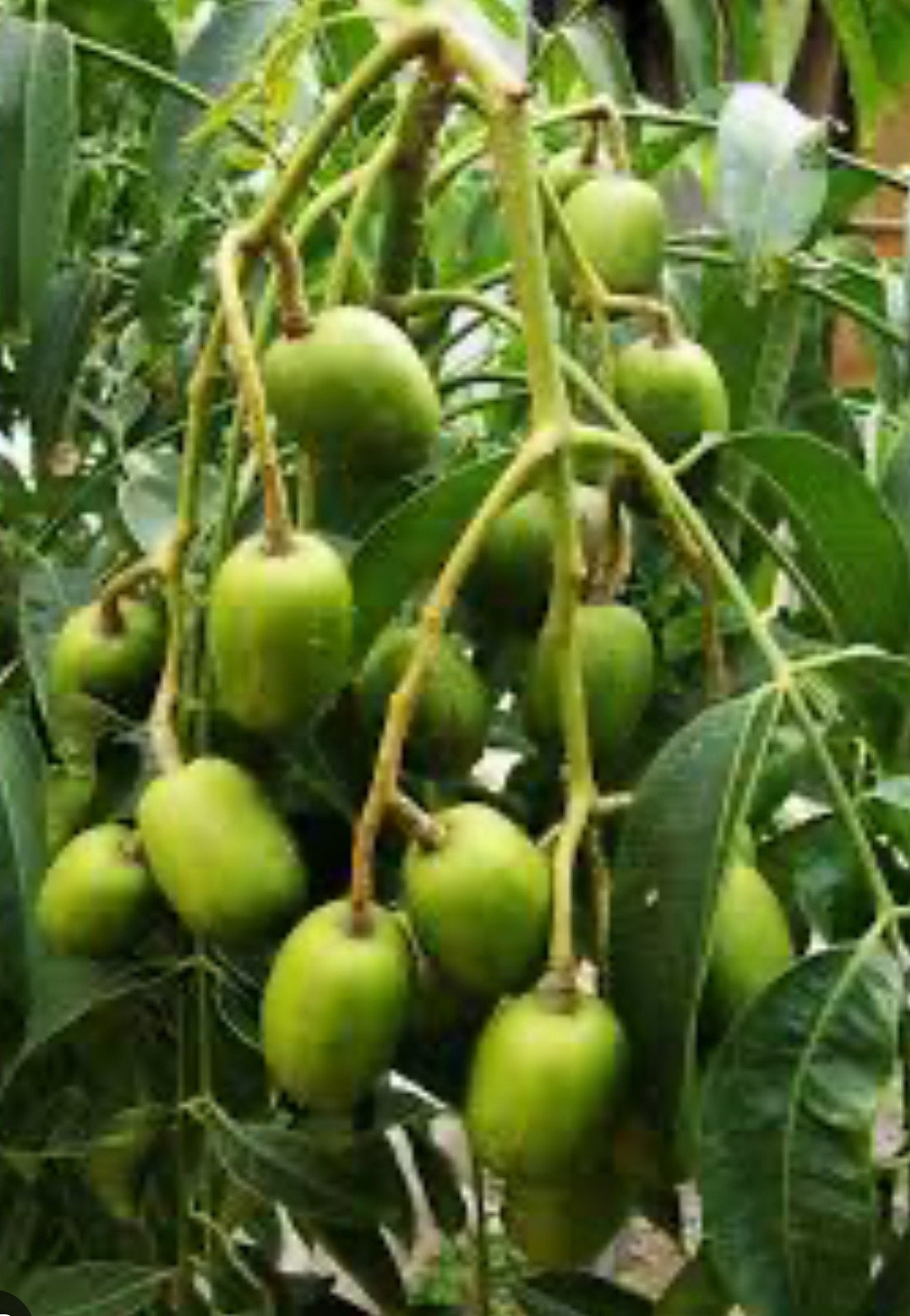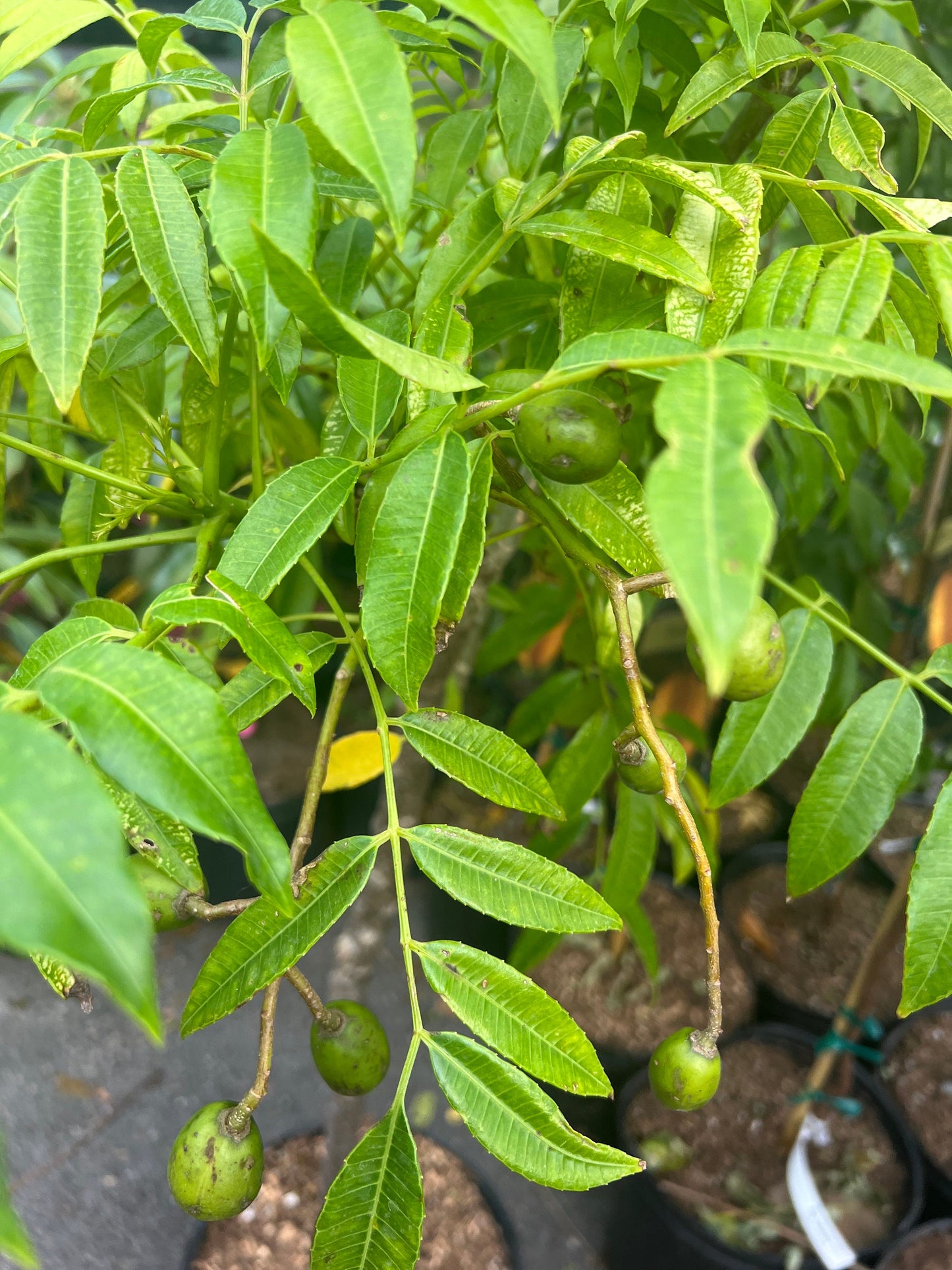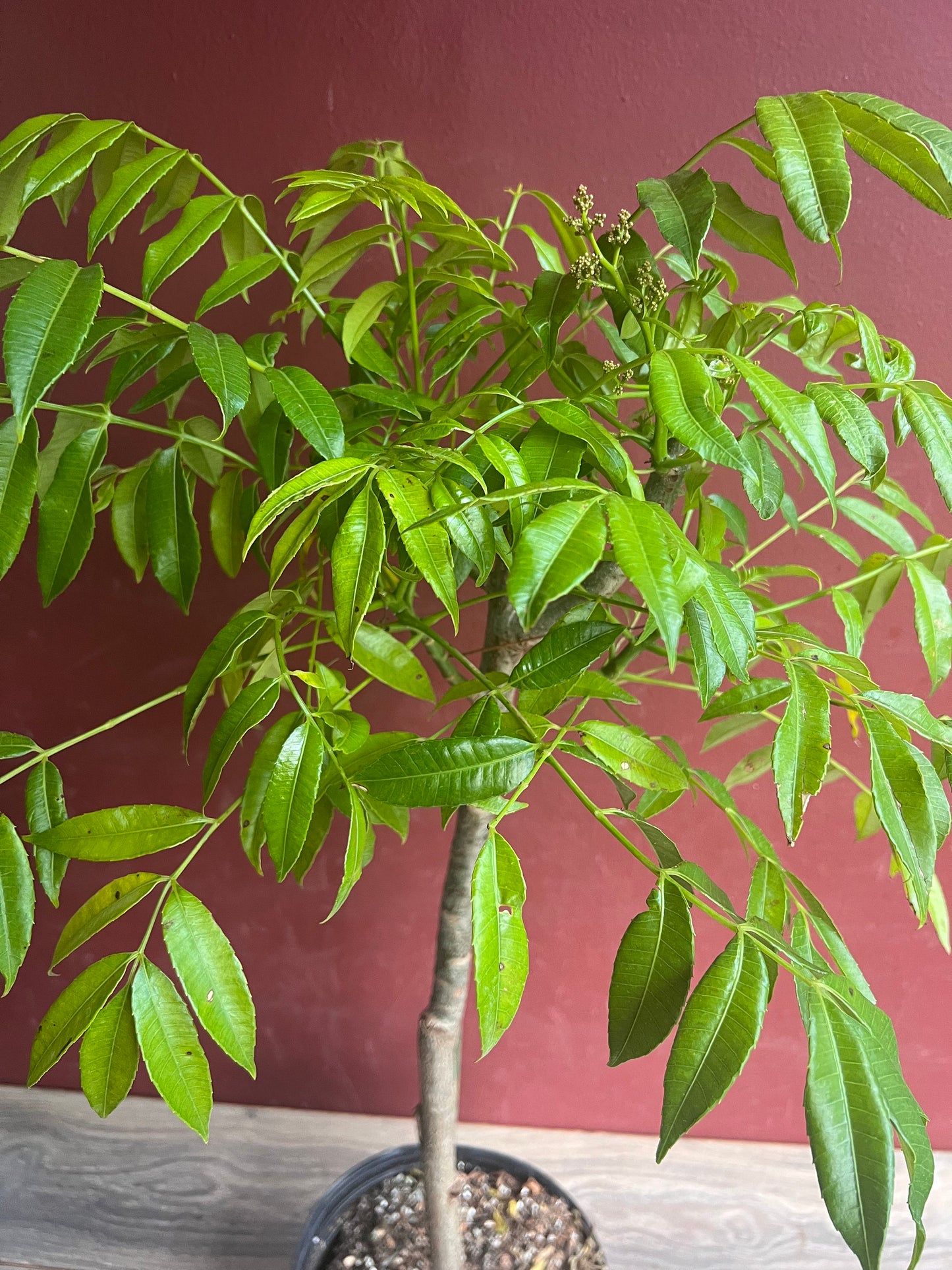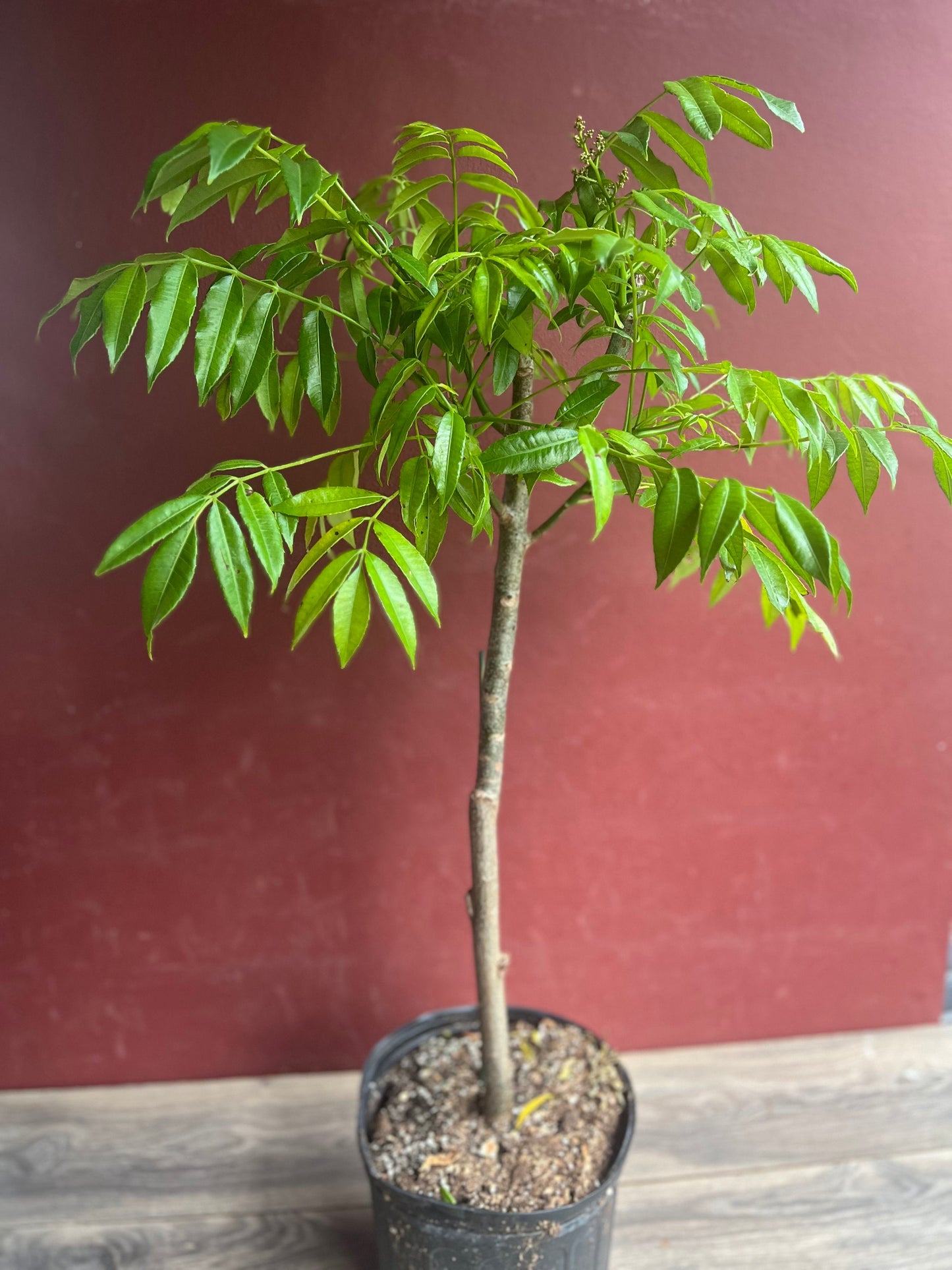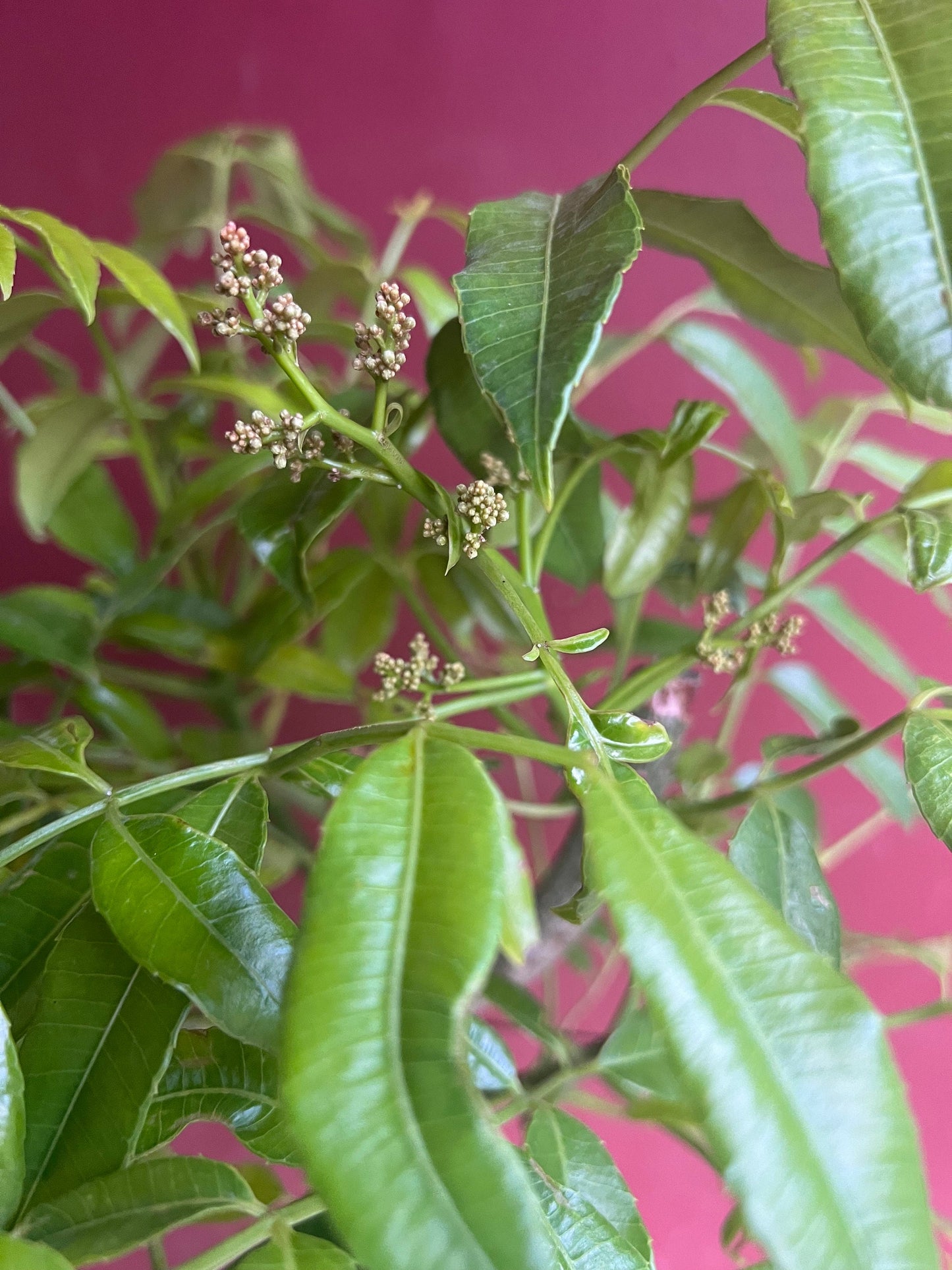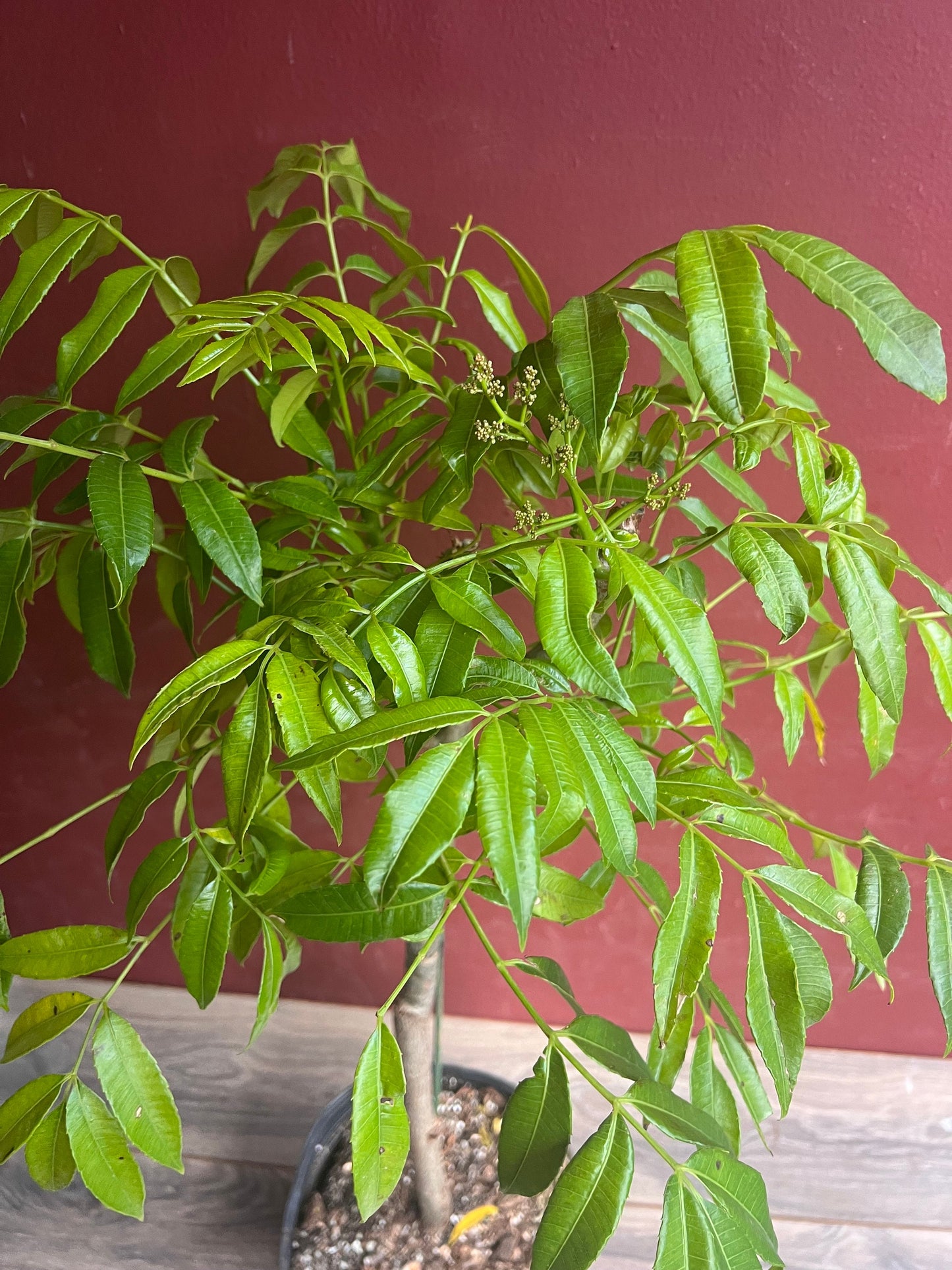June Plum Dwarf, Ambarella Fruits, Jewel Plums in 10" Pot, Kedondong, No Ship to CA and HI
June Plum Dwarf, Ambarella Fruits, Jewel Plums in 10" Pot, Kedondong, No Ship to CA and HI
Couldn't load pickup availability
Note: You will receive one June Plum in 3 Gallons pot similar to the pictures
June Plum (Spondias mombin), also known as Yellow Mombin or Hog Plum, is a tropical fruit tree native to Central and South America. The tree produces bright yellow, plum-shaped fruits that are tart when unripe and become sweet and tangy as they ripen. The fruit has a thin, edible skin and juicy flesh with a large seed in the center. June plum trees are fast-growing, reaching up to 30 feet (9 meters) tall, with large compound leaves and fragrant clusters of small flowers. The fruit is eaten fresh or used in salsas, juices, jams, and desserts.
The June plum tree is relatively low-maintenance and can be grown in various soil types, though it prefers well-draining, slightly acidic soil. It thrives in full sun and tropical climates, and while somewhat drought-tolerant, it benefits from regular watering during dry spells. The tree can be propagated from seeds or grafted for better fruit production and uniformity.
Care Tips for June Plum:
1. Light Requirements
- Full Sun: June plum trees thrive in full sun and need at least 6-8 hours of direct sunlight per day for optimal growth and fruit production. They can tolerate partial shade but perform best in full sun.
- Indoors: If growing indoors, place the tree in the brightest spot, such as near a south-facing window.
2. Watering
- Regular Watering: June plum trees are somewhat drought-tolerant but benefit from regular watering, especially when young or during dry spells. Keep the soil moderately moist but avoid overwatering.
- Watering Frequency: Water deeply when the top 1-2 inches of soil feel dry. Reduce watering during the rainy season to prevent root rot.
3. Soil Requirements
- Well-Draining Soil: The tree prefers loamy or sandy soil with good aeration. It grows best in slightly acidic to neutral soil (pH 5.5 to 7.5).
- Avoid Waterlogged Soil: Ensure the tree is planted in well-draining soil, especially if growing in a pot with drainage holes.
4. Temperature and Humidity
- Warm Temperatures: June plum thrives in temperatures between 75°F to 95°F (24°C to 35°C). It is not frost-tolerant, so protect the tree from cold temperatures below 50°F (10°C).
- Humidity: While the tree tolerates moderate humidity, it will benefit from a more humid environment. If grown indoors, consider using a humidifier or placing a humidity tray nearby.
5. Fertilizing
- Balanced Fertilizer: Use a balanced fertilizer (e.g., 10-10-10 or 20-20-20) during the growing season (spring and summer), applying once every 4-6 weeks to promote healthy growth.
- Organic Fertilizers: Compost or well-rotted manure can also be used to enrich the soil.
- Reduce Fertilizing in Fall/Winter: Fertilizing should be reduced during the dormant period in fall and winter when the tree’s growth slows.
6. Pruning and Maintenance
- Light Pruning: Prune to remove dead or damaged branches and shape the tree. This encourages better air circulation and sunlight penetration.
- Prune After Harvest: The best time to prune is after the tree has finished fruiting, typically in late fall or early spring.
- Thin Out Branches: If the tree becomes too dense, thinning out some branches can improve airflow and reduce fungal diseases.
7. Pests and Diseases
- Common Pests: June plum trees are resistant to pests but may attract aphids, scale insects, mealybugs, or fruit flies. Check regularly and treat infestations with organic insecticidal soap or neem oil.
- Root Rot and Fungal Diseases: The tree is susceptible to root rot if overwatered or planted in poorly draining soil. Avoid overhead watering to prevent fungal growth.
- Leaf Spot and Rust: In humid conditions, June plums may suffer from leaf spot or rust diseases. Treat with fungicide and remove infected leaves.
8. Pollination
- Self-Fertilizing: June plum trees are generally self-pollinating, meaning one tree can produce fruit alone. However, multiple trees may increase yield.
- Encourage Pollinators: Attracting bees and other pollinators by planting nectar-rich flowers nearby can improve fruit set.
9. Harvesting
- Fruit Ripening: Harvest the fruit when it turns from green to bright yellow and feels slightly soft to the touch. Unripe fruit is tart, while ripe fruit is sweet and tangy.
- Harvesting Method: Gently twist or cut the fruit from the tree to avoid damaging the flesh. The fruit can be eaten fresh or used in recipes like salsas, jams, and juices.
10. Container Growing (For Small Spaces)
- Potting June Plum: If growing in a container, use a large, deep pot with drainage holes. Choose a well-draining potting mix and ensure the tree gets plenty of sunlight.
- Repotting: Repot the tree every 1-2 years to give it room for growth and refresh the soil. A larger pot will help the tree reach its full potential.
Share
